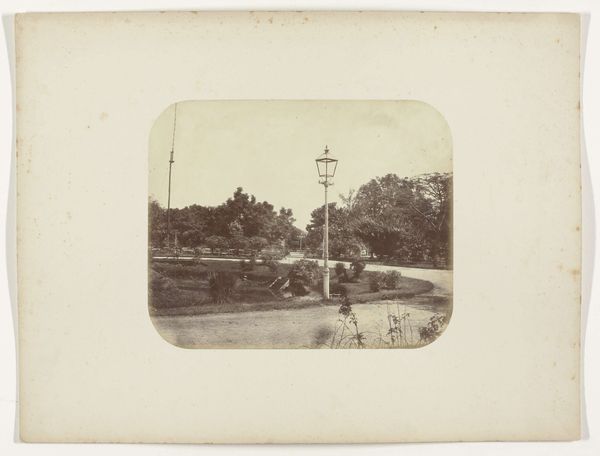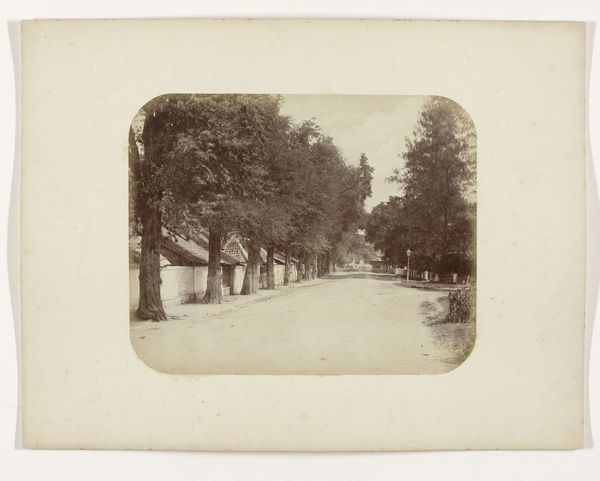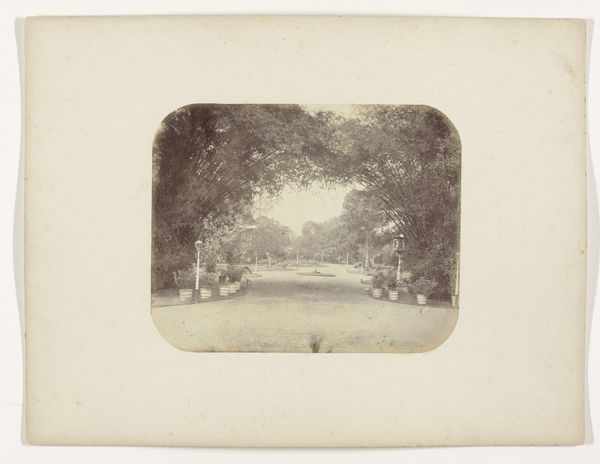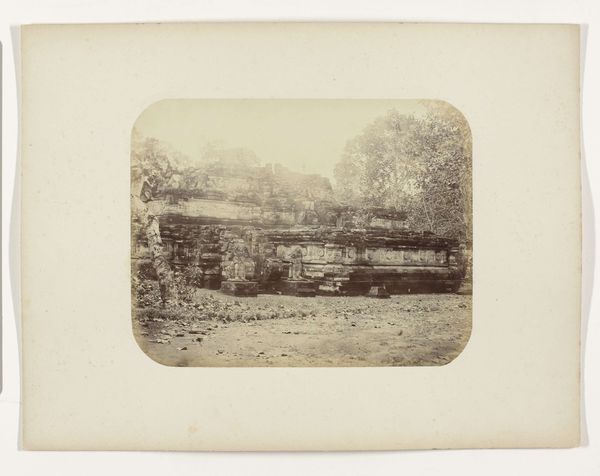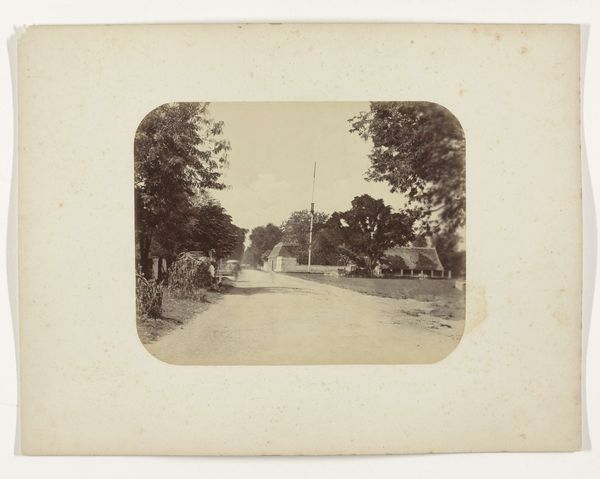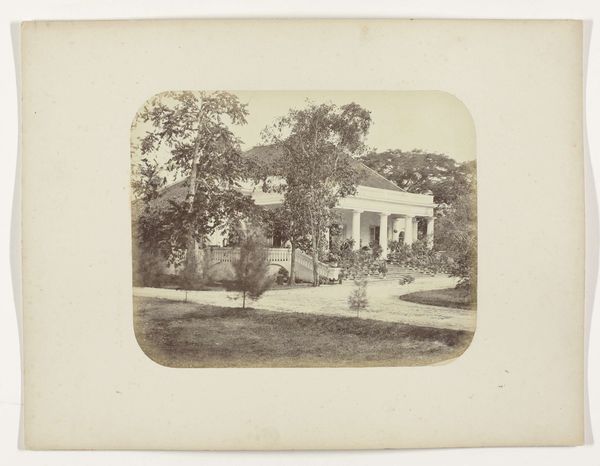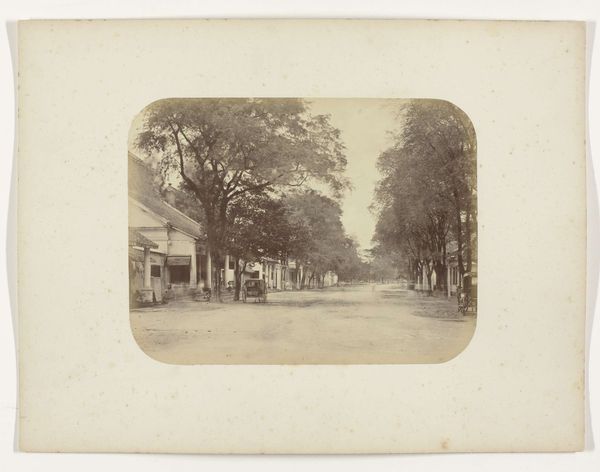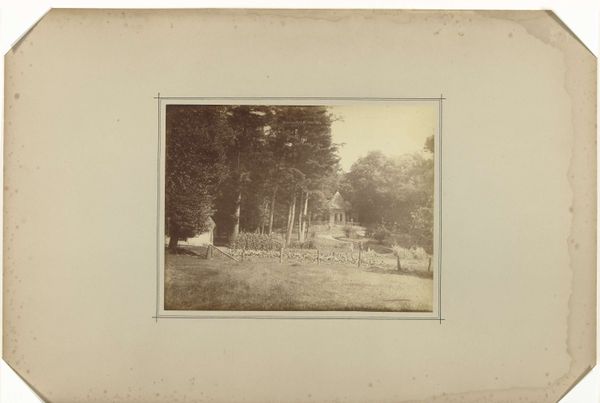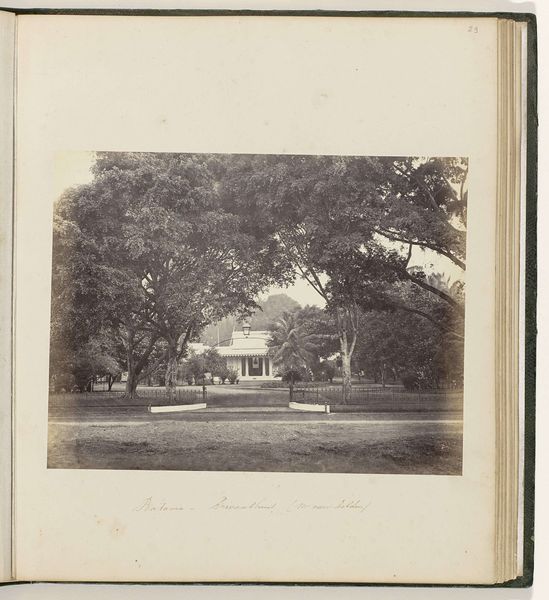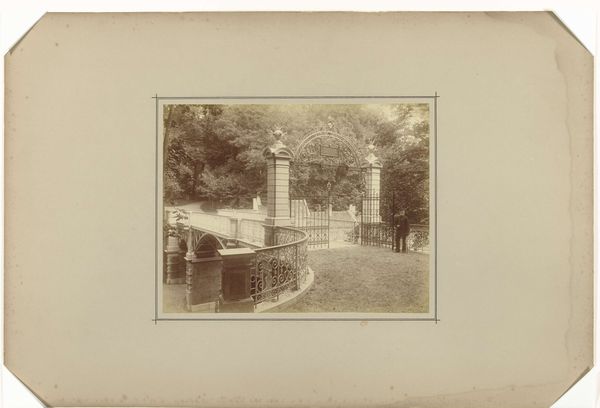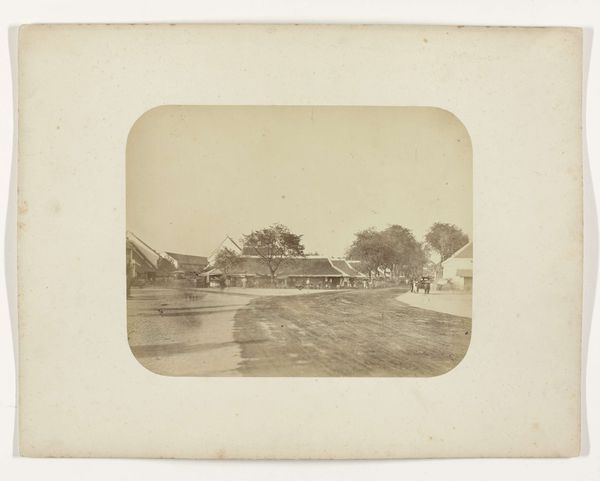
photography
#
landscape
#
photography
#
orientalism
#
realism
Dimensions: height 20 cm, width 24.7 cm
Copyright: Rijks Museum: Open Domain
Curator: Herman Salzwedel's photograph, "A kiosk in the city park of Surabaya", created sometime between 1876 and 1884, presents a seemingly tranquil park scene. What's your initial read on it? Editor: A staged, idealized view. It feels like an attempt to manufacture tranquility in a place that perhaps wasn't always so serene. The light is soft, the scene picturesque. Almost…performative. Curator: Exactly. It invites consideration of what that manufactured tranquility obscures. The photograph as a construction reflects colonial power dynamics—the idea of controlling and taming not only nature but also the narrative itself. The choice to represent this urban space in such an orderly fashion can be seen as an expression of colonial control over Indonesia, focusing on presenting it as safe and prosperous under Dutch rule, when this image doesn't communicate the social realities experienced by the people living here at this moment. Editor: Absolutely, the controlled nature. Even the light feels carefully managed, filtered. Given that this is a photograph, the materiality itself raises questions. Who had access to the technology? Who controlled the means of representation? And for whom was this image created? Curator: A vital point. Photography during this period wasn't simply a neutral act of documentation, rather it involved a certain level of mastery over new industrial processes, reinforcing hierarchies in access, depiction, and reception. How do you view the kiosk itself as an object within the broader scene? Editor: I see it as a material marker of cultural imposition. The kiosk, likely European in design, becomes a focal point, literally centering the colonizer's culture within an Indonesian landscape. The deliberate placement within the park, the craftsmanship invested in this frivolous construction of public enjoyment… these reinforce notions of cultivation and cultivation in both landscape and social terms. The materials and the craftsmanship of this pavilion suggest not just cultural exchange but the implementation of particular ways of viewing public life and civic ideals. Curator: Ultimately, Salzwedel’s photograph isn't simply a scenic view; it prompts us to question the construction of power and representation inherent in colonial depictions. Editor: Agreed. It encourages thinking about not just the aesthetics but also the socio-political infrastructures—or perhaps impositions is a better word—that they represented.
Comments
No comments
Be the first to comment and join the conversation on the ultimate creative platform.
